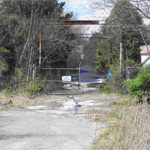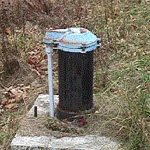Success Stories
Making the Health Call After Homes and Schools are Evacuated
A railroad car valve failed at the Huntington, West Virginia TechSol facility. Some 23,000 gallons of coal tar light oil spilled into Kraut’s Creek and into the storm sewers in Huntington’s Westmoreland section. Within 4 ½ hours, authorities evacuated people from more than 500 homes and an elementary school. Coal tar light oil is a mixture of volatile chemicals, 68 percent of which is benzene—known to cause cancer in humans. The Wayne County (WV) Health Department asked ATSDR’s West Virginia Cooperative Agreement Partner to advise when persons could safely reenter their homes. The West Virginia Cooperative Partners Program and the Wayne County Health Department concluded that people could safely return to their homes when the outdoor benzene air readings were consistently below levels of health concern. Investigators also took indoor air readings of benzene in the homes closest to the spill site. Most of the residents were allowed to return home 2 days after the spill. But residents of as many as 36 homes remained evacuated for a week.
Environmental Justice Success in Tennessee

A largely Hispanic community in Lenoir City, Tennessee, was at risk of lead poisoning. The Tennessee Department of Health Environmental Epidemiology Program—funded by ATSDR’s Cooperative Agreement program—worked with the Tennessee Department of Environment and Conservation (TDEC) to safeguard the community’s health. ATSDR’s efforts also helped to protect this community from environmental hazards.
In times past, the former Lenoir City Car Works in Lenoir City, Loudon County, Tennessee, built railroad cars. Lead from that manufacturing process contaminated the yards of homes near where the train cars were once built. Analyzed samples confirmed that some yards in the neighborhood had high lead concentrations. Although arsenic also appeared in the heavy metal samples, exposures were low. Because of the lead levels and the possible public health hazard to children, authorities immediately closed public access to the site.
ATSDR Emergency Response personnel provided logistical support and provided an information officer to work with the media. The community residents received information in both English and in Spanish on how to protect their families and on how to have their blood tested. Eighteen members of the community participated in blood lead testing. The tests showed that evacuation was unnecessary.
ATSDR helped to assure a Hispanic community that state and local health departments and the TDEC cared about them. These government entities were prepared to do whatever was necessary to protect community members from environmental hazards. The Loudon County Health Department remains ready to provide additional outreach, education, and treatment, if necessary. ATSDR’s financial assistance provided the Tennessee Department of Health (TDH) the ability to offer an environmental public health program to deal with this public health challenge.
Injury Risk Reduced at Abandoned Wells

The Georgia Department of Human Resources, Division of Public Health, Environmental Health Section Chemical Hazards Program (CHP), is an ATSDR Cooperative Agreement partner. CHP collaborated with the City of Conyers, Georgia, in a program to abandon properly a number of individual, private wells in the vicinity of the Rockdale County’s Miller Bottom Road Landfill.
Routine monitoring of the Miller Bottom Road Landfill found in on-site groundwater various volatile organic compounds (VOCs), including tetrachloroethylene, trichloroethylene, and vinyl chloride. These contaminants were below public health-hazard levels. Still, a residential community and a reservoir are nearby the closed and capped landfill. And both are in the groundwater flow path. The site investigations also uncovered numerous abandoned, private wells improperly capped or even uncapped. Improperly abandoned, unused private water wells leave open holes in the ground. Such wells have the potential for contamination from surface water runoff, for surface soil deposition, or for both. These holes are also dangerous. People—especially children—pets, and wild animals can fall into an abandoned well and become injured or trapped.
A project such as this is valuable to ATSDR. It highlights the importance of providing health education and community involvement outreach to a neighborhood near a landfill. Most of the residents were aware of the issues surrounding the landfill. Still, they needed information about the importance of how to abandon properly unused private wells. And by properly abandoning unused private wells and connecting to the regularly monitored City of Conyers water supply, this community will have a safer environment and safer water supply.
- Page last reviewed: March 9, 2017
- Page last updated: March 9, 2017
- Content source:



 ShareCompartir
ShareCompartir